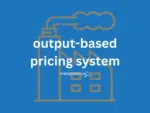
The Output-Based Pricing System (OBPS) in Canada is a regulatory framework that is specific for industries, where these facilities are set to be incentivized to reduce their greenhouse gas emissions (and to promote innovation), by setting performance standards based on their output. Instead of paying a carbon price on any fuels used, there is instead a system in place where facilities are charged based on emissions exceeding an output-based limit, which is determined by several factors.
Recently, there have been some amendments to the OBPS and in this article, we will explain how it works and the changes made, since the carbon tax removal has become effective in Canada as of April 1st, 2025.
Who does this affect, and what do the changes mean?
The OBPS primarily affects large industrial companies that are in emissions-intensive sectors, and as well as those that are in the electricity sector, since those typically make a substantial contribution to greenhouse gas emissions. Facilities that are included in cement, steel, and iron manufacturing and also chemical manufacturers that compete in global markets across the world, and not just in Canada itself. RECs (Renewable Energy Certificates and Credits) are also important for understanding OBPS and who/what sectors it affects, and what that also means for Canada and GHG.
The provinces with their own systems and the provinces under the federal system
The federal OBPS is across the country, but despite that, it doesn’t apply in all provinces. For example, New Brunswick, Ontario, and Saskatchewan were previously under the federal system, but have since transitioned to their own provincial systems or have an equivalent that may be more beneficial. Canada itself has a long history as a leader on carbon pricing, with BC, Quebec, and Alberta since 2007-2013 pioneering various types of carbon pricing systems themselves.
Since 2019, the Pan-Canadian Approach to Pricing Carbon Pollution has ensured carbon pricing is in place at similar levels of stringency across the country while maintaining flexibility for provinces and territories. Provinces and territories can design their own pricing system tailored to their needs as long as it meets federal minimum national stringency standards, which are also known as the federal benchmark.
If the provinces or territories decide not to price pollution or propose a system that does not meet those standards, then the federal system is put in place, as the federal backstop has two parts:
- A regulatory charge on fossil fuels like gasoline and natural gas.
- A performance-based system for industries, which is the OBPS.
One or both of these can apply in a jurisdiction. These are continuously changing.
Alberta’s TIER Program
In Alberta, the TIER (Technology Innovation and Emissions Reduction Regulation) is at the core of emissions management in Alberta. The TIER system implements Alberta’s industrial carbon pricing and emissions trading system. TIER helps industrial facilities find innovative ways to reduce emissions and invest in clean technology to stay competitive and to save money.
TIER-regulated facilities include those that emitted 100,000 tonnes or more of carbon dioxide equivalent per year in 2016 or any subsequent year, or those that import more than 10,000 tonnes of hydrogen annually. Facilities with emissions less than this threshold may opt in to the regulation if the facility competes directly with another regulated facility, emits 2,000 tonnes or more and belongs to an emissions-intensive, trade-exposed sector.
British Columbia
BC has a Greenhouse Gas Reduction Regulation in place that aligns with the federal OBPS system.
Manitoba
Both parts of the federal backstop apply to Manitoba.
New Brunswick
The New Brunswick output-based pricing system, the NB OBPS, is used to regulate greenhouse gas emissions from large emitters, which include New Brunswick’s industrial and electricity generation sectors. On January 1st, 2021, facilities emitting 50,000 tonnes or more of carbon dioxide annually in the province became subject to the NB OBPS. Facilities emitting between 10,000 tonnes and 50,000 tonnes or more have the option to participate by ‘opting in’.
This regulatory system allows the province to establish GHG performance standards.
Newfoundland and Labrador
Newfoundland and Labrador uses the federal OBPS for their GHG emissions tracking.
Nova Scotia
Nova Scotia uses the federal OBPS and on their government website for climate change, the new OBPS pricing system will help the province meet targets of a 53% reduction in GHG emissions by 2030, and net-zero emissions by 2050. The OBPS will continue to regulate GHG from large emitters, which includes Nova Scotia’s industrial and electricity generation sectors.
Nunavut
Both parts of the federal backstop apply to Nunavut.
Prince Edward Island
Both parts of the federal backstop apply to Prince Edward Island.
Ontario’s Emissions Performance Standards (EPS)
Ontario has an Emissions Performance Standards (EPS) system in place for its OBPS/GHG emissions. The Emissions Performance Standards Regulation, under the Environmental Protection Act, regulated greenhouse gas emissions from large facilities in manufacturing, resource, and electricity generation industries. This program came into full effect on January 1st, 2022 and is intended to:
- Encourage the industrial sector to reduce greenhouse gas emissions.
- Minimize competitiveness impacts and carbon leakage – the risk of production leaving the province for other jurisdictions with less stringent climate policies.
Quebec
Quebec has a Cap-and-Trade system in place, as opposed to the federal OBPS system. For more information from the Government of Canada’s website for this, keep in mind that a lot of the information is in French; you can do so here.
Saskatchewan
Total GHG emissions from facilities and sectors covered by the OBPS are currently under development for Saskatchewan. Compensation and other compliances for GHG are also currently under development.
Saskatchewan does have its own OBPS program and is a key component of the province’s approach to climate change. Their OBPS program was expanded in 2022 and updated in 2023, covering more industrial sectors and emissions, and requiring regulated emitters to meet emissions reduction requirements and targets. More information can be found on the province’s website here, including their technology fund as well, which feeds into the OBPS.
Yukon
Both parts of the federal backstop apply to the Yukon.
The GHG emissions of industries vs households in Canada
In Canada, oil and gas contribute the most to GHG emissions, followed by transportation and buildings. In 2021, oil and gas accounted for 28% of total emissions, while transportation and buildings contributed 22% and 13% respectively. Households contribute significantly to GHG emissions, and this number will continue rising as more homes and large residential buildings are being built. Per capita emissions in 2021 were at 3.0 tonnes for households, with large industries being higher.
A more detailed breakdown is:
- The oil and gas sector was the highest emitting industry from 2009 to 2021 and has been responsible for 23.2% of Canada’s total GHG emissions.
- Buildings, including residential and commercial structures, are also a major source, with 13% of total emissions.
- Heavy industry, households, and other sectors such as agriculture, waste management, and electricity generation also contribute to Canada’s overall GHG emissions.
GHG stats related to industries in Canada
Canada’s total greenhouse gas emissions in 2023 were 694 megatonnes of carbon dioxide equivalent (Mt CO2 eq), a 0.9% decrease from 700 Mt CO2 eq in 2022. From 2005 to 2023, Canada’s GHG emissions decreased by 8.5%, and between 1990 and 2023, Canada’s GHG emissions increased by 14.4%
Greenhouse gas emissions, Canada, 1990 to 2023
And by individual sector, the oil and gas and transport sectors were the largest GHG emitters in Canada, accounting for 30% and 23% of total emissions, respectively.
From 2022 to 2023, a limited increase in emissions was observed for the transport, heavy industry, waste and other sectors, while emissions decreased for the oil and gas, buildings, electricity, and agriculture.
1990 to 2023 shows an increase in emissions observed of the oil and gas (+77%), transport (+33%) buildings (+15%), and agriculture sectors (+37%). “Others” in the Waste and others sector consists of emissions from light manufacturing, construction, forest resources and coal production. The Heavy industry sector consists of emissions from smelting, mining, and refining, pulp and paper, iron and steel, cement, lime and gypsum, and chemicals and fertilizers – to name a few.
Energy solutions for large businesses
With the OBPS, GHG emissions, changing news, and more, there are options for businesses and industrial energy consumers to employ a better and more manageable energy costs and other corporate benefits. With EnergyRates.ca, you can learn more about industrial and large commercial energy options, and learn unbiased personalized advice from our team for the best way to navigate the changing climate and reduce energy costs, as well as the best options for renewable energy plans.











